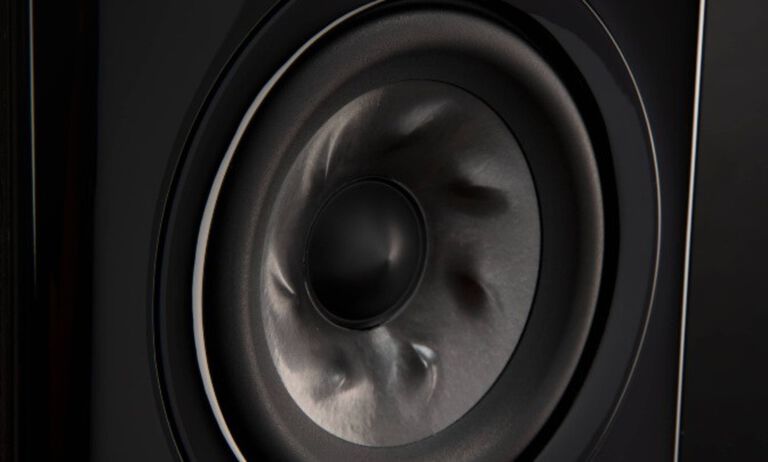Smoother Sound: The Science Behind the Turbine Cone Woofer
Article written by SARAH JONES

When you’re listening to speakers, it’s easy to fall hard for high-end sparkle and big, gut-punch bass—and those are definitely important. But how much attention do you pay to the middle of the frequency range?
That range, between about 300 Hz and 5 kHz, contains most of the audio content in music, movies, and TV shows. Compounding that, humans don’t perceive all frequencies as being equally loud; we’re much more sensitive to upper-midrange frequencies, especially those around the 2 kHz to 4 kHz range. For these reasons, midrange frequencies are critically important when it comes to reproducing the clarity and separation of instruments and voices in the mix.
In order for a driver to accurately reproduce sound, it needs to move consistently and efficiently. But the bigger the driver, the harder it is to control. When cones are pushed hard they can start to flex and exhibit resonances; this phenomenon, called “break up,” creates undesirable sonic artifacts like sharp peaks and ringing.
To prevent these issues, finding the perfect balance of cone lightness and stiffness is critical.
The Polk Turbine Cone Woofer solves the break-up mode problem through both materials and design. We start with an injection-molded cone that sandwiches air inside a rigid foam structure, which makes the cone thicker and stiffer without adding extra weight. Then, we add fin-like ridges in a vortex pattern, which increases stiffness without adding mass. As a result, resonances are pushed out of band, resulting in cleaner, more detailed sound.
There are even more innovations behind the cone, including an ultra-efficient motor and dual spiders. Take a deeper dive in the video below:
Polk’s Turbine Cone Woofer will never bend or flex, no matter how loud you crank things up—it just presents natural, balanced midrange frequencies with dazzling dimensionality, for that live, front-row feeling you crave.










